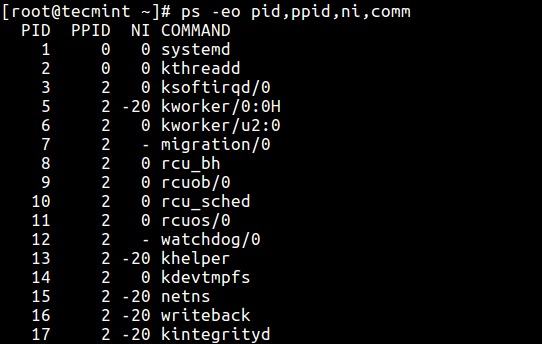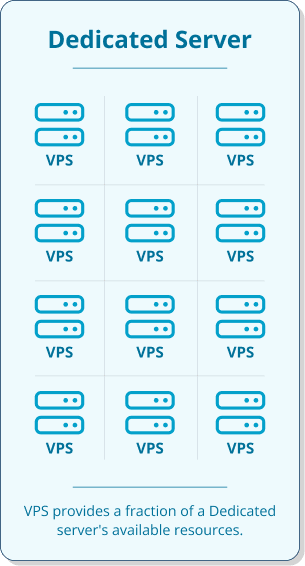Are you ready to take control of your online presence? Managing your own virtual private server (VPS) can be a powerful solution for your online business if you’re seeking greater flexibility and control over your website.
It can offer you a variety of benefits, such as improved performance and enhanced security features. Without the right knowledge and expertise, however, this endeavor can quickly become overwhelming and challenging to navigate.
Explore the common pitfalls faced by those managing their own VPSs and learn expert tips to overcome these challenges with this guide. Delve into essential aspects such as the best tools and services for VPS management and examine top VPS providers.
Whether you aim to host your WordPress sites, other websites, or even online apps, by the end of this article, you will have a better understanding of how to effectively manage your VPS and enhance its performance, security, and uptime.
Get ready to unlock the keys to successful VPS management and elevate your online ventures to new heights.
Why Choose a VPS?
Before diving into VPS management, it is crucial to understand your specific needs and requirements to select the right hosting solution for your website. A virtual private server is an excellent option that provides several key advantages over other types of hosting, such as shared hosting, dedicated hosting, and cloud hosting.
Here is a comparison between all four options:
| Hosting Type | Overview | Pros | Cons | Price | Users |
|---|---|---|---|---|---|
| Virtual Private Server (VPS) Hosting | Websites share a server but with fewer sites and have dedicated resources. | More affordable than dedicated hosting. Enhanced security. Faster performance. Greater control and scalability. |
Potential overselling by some providers. More expensive than shared hosting. May require technical configuration. |
Moderate. | Websites that need dedicated resources and more control. |
| Shared Hosting | A popular option for beginners. Your website will share a server with other websites. | Affordable hosting option. Beginner-friendly. Server management is handled by the hosting company. |
Slower page load times. Potential security risks. Limited control and scalability. |
Cheapest. | Small websites with minimal traffic. |
| Dedicated Hosting | Your website has its own dedicated server with full access and customization. | Complete server control. High performance. Enhanced security. |
Expensive. Requires technical expertise for maintenance. |
Most expensive. | Large businesses and high-traffic websites. |
| Cloud Hosting | Websites are hosted on a virtual partition of multiple servers in a network. | Reliable and scalable. Flexible resource allocation. Cost-efficient. |
Requires advanced knowledge for setup. Resource sharing with other websites. |
Variable, per-usage basis. | Businesses of any size with affordability as their priority. |
Advantages of a VPS
A virtual private server stands at the intersection of shared hosting and dedicated server hosting, combining the best of both solutions. Accordingly, it offers a plethora of advantages that will empower you to harness the full potential of your websites or applications by providing you with dedicated resources.
Here are some of the benefits you can expect from having a VPS:
Improved Performance and Stability
Unlike shared hosting, where you share resources with other users, a VPS guarantees specific resources to your website. This offers improved performance and stability, especially during peak traffic periods.
Greater Control and Customization
A VPS grants root access, which allows users to customize their server environment to their specific needs. This is something that’s not always possible with shared hosting.
Scalability
With a VPS, you can easily add or remove resources based on the growth of your website or application. This scalability means you’re not paying for resources you don’t need or risking outgrowing your hosting plan.
Enhanced Security
VPS hosting includes dedicated IP addresses, firewalls, and data isolation. These security features add an extra layer of protection to your data.
Cost-Effective
Although more expensive than shared hosting, using a VPS offers excellent value for money. You only pay for the resources you need, benefiting from a balance between cost and performance.
Therefore, if you are seeking flexibility, performance, security, and cost-effectiveness, a VPS could be the right choice for you. However, you should bear in mind that a VPS requires a higher level of technical expertise to manage effectively.
Understanding VPS Management
Despite offering a scalable and cost-effective solution that provides greater control and flexibility compared to shared hosting, a VPS requires a solid understanding of its key components and the various tasks, such as the ones mentioned in this section, involved in managing it effectively.
Let’s delve into the essentials of VPS management and explore the key aspects that you should be aware of:
Server Setup and Configuration
The first step in VPS management is to ensure that your server is properly set up and configured. This includes choosing a suitable operating system (OS) and installing it. Commonly used operating systems include Linux distributions such as Ubuntu, CentOS, or Debian, and Windows.
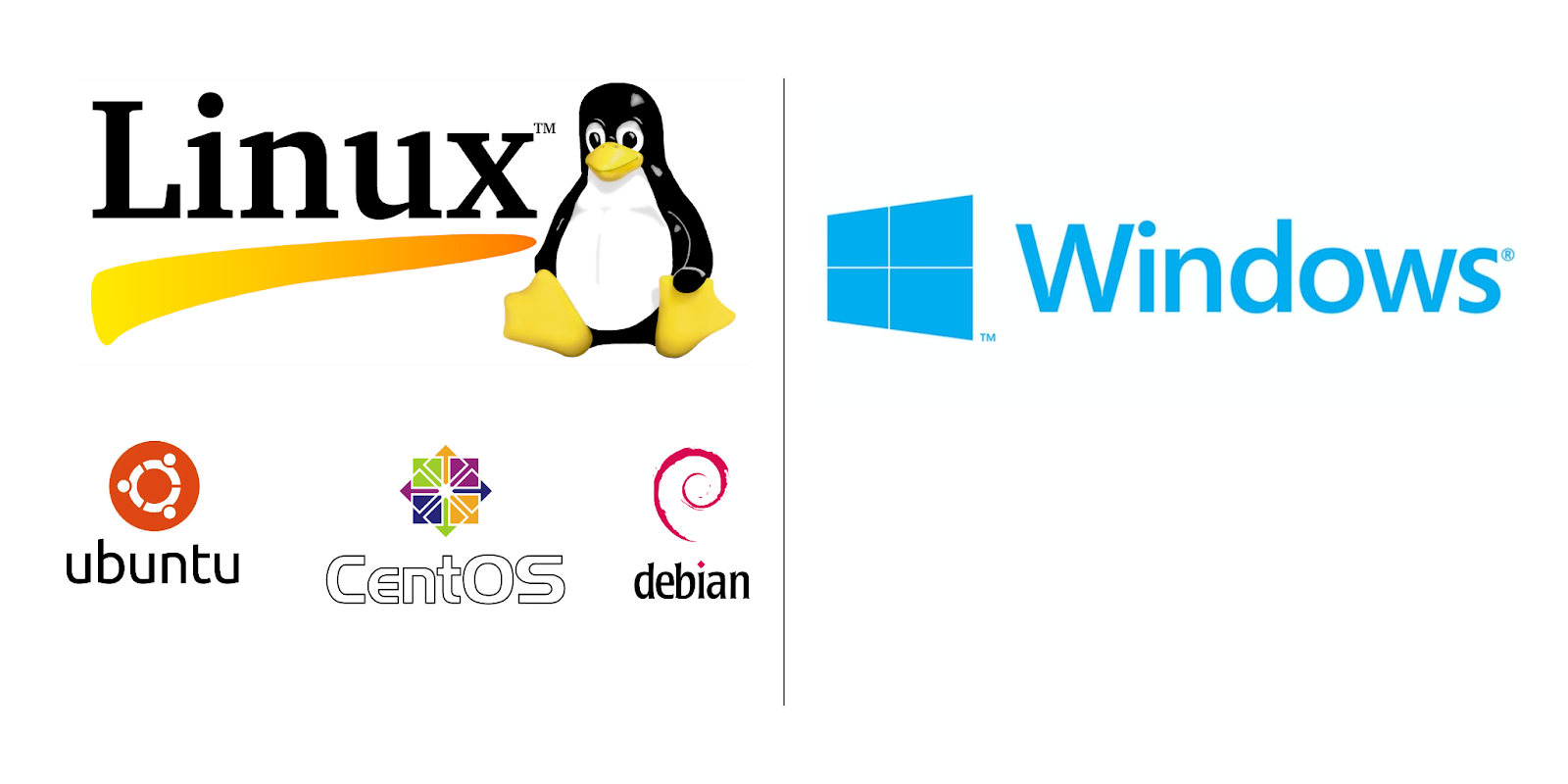
- Monitoring and maintenance
Regular server monitoring is crucial to identify and resolve potential issues before they impact your VPS performance or uptime. Maintenance tasks, including software updates, security patches, and hardware upgrades, are vitally important in keeping the server running smoothly and securely.
- Control panels and management tools
These tools simplify VPS management by providing you with a user-friendly interface for tasks like server configuration, software installation, and user management. Among the best control panels are cPanel, Plesk, and Webmin. They automate many routine tasks to save you valuable time and effort.
- Backups and disaster recovery
Regular backups protect your valuable data, enabling you to recover your websites or apps from data loss or corruption. Disaster recovery planning ensures business continuity in case of unexpected events like server failures or natural disasters.
- VPS security
Implementing robust security measures is vital in VPS management. These include SSL certificates, firewalls, antivirus software, access control, and frequent security updates. These measures safeguard your VPS and your data against cyberattacks and unauthorized access.
- Troubleshooting and support
VPS management also includes troubleshooting issues that may arise with your VPS environment or your websites and web applications that are hosted on it. Having access to technical support staff who can assist with problems related to your VPS environment and its software is essential. This will typically involve diagnosing and fixing issues with hardware, software, or network configurations.
Mastery of these aspects ensures a secure, reliable, and efficient VPS environment, benefiting both you as the VPS administrator and your website or application users.
When it comes to effective VPS management, the right tools and services make all the difference. However, the selection should depend on your specific needs and technical expertise.
You should ensure your tools are compatible with your operating system, be it Linux, BSD variants (e.g., FreeBSD), or Windows. Additionally, choose tools and services that are easy to use with a shallow learning curve and features like one-click installations, automated backups, and resource monitoring. You should also consider your budget constraints and keep an eye out for potential hidden costs or long-term commitments.
Here are some essential tools that can facilitate your VPS management.
SSH Client and Terminal Emulator
SSH (Secure Shell) is a cryptographic network protocol that ensures secure communication between you and your server. It uses encryption techniques and authentication keys to protect the data transmitted over the network, preventing unauthorized access to sensitive information, such as login credentials and server configurations. It also enables you to perform tasks, install software, configure services, and troubleshoot issues on your VPS from your local machines remotely.
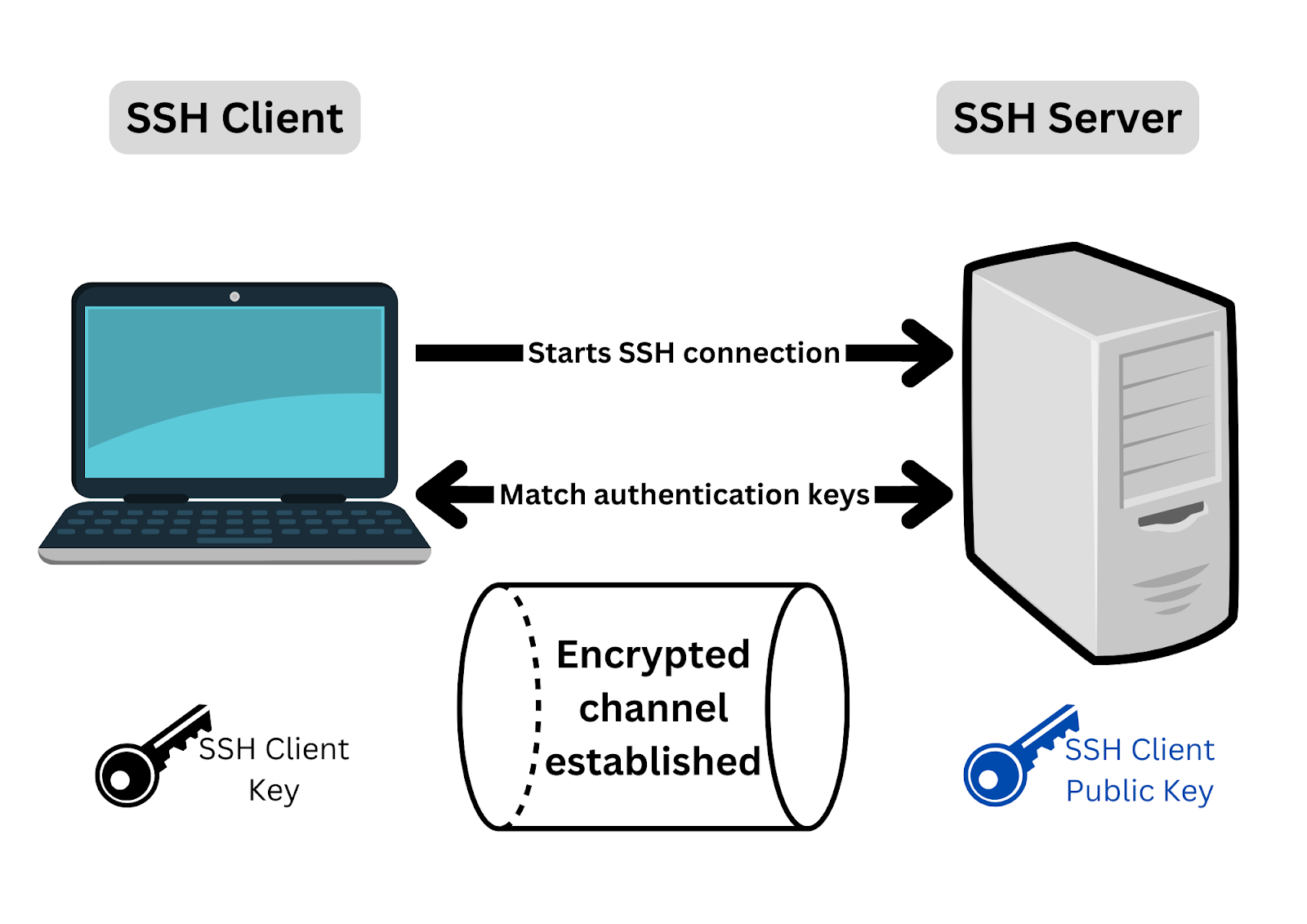
Among the most popular SSH clients that you can use are PuTTy (for Windows), your built-in Terminal or GNOME Terminal (for Linux), or your built-in Terminal app (for MacOS).
FTP Client
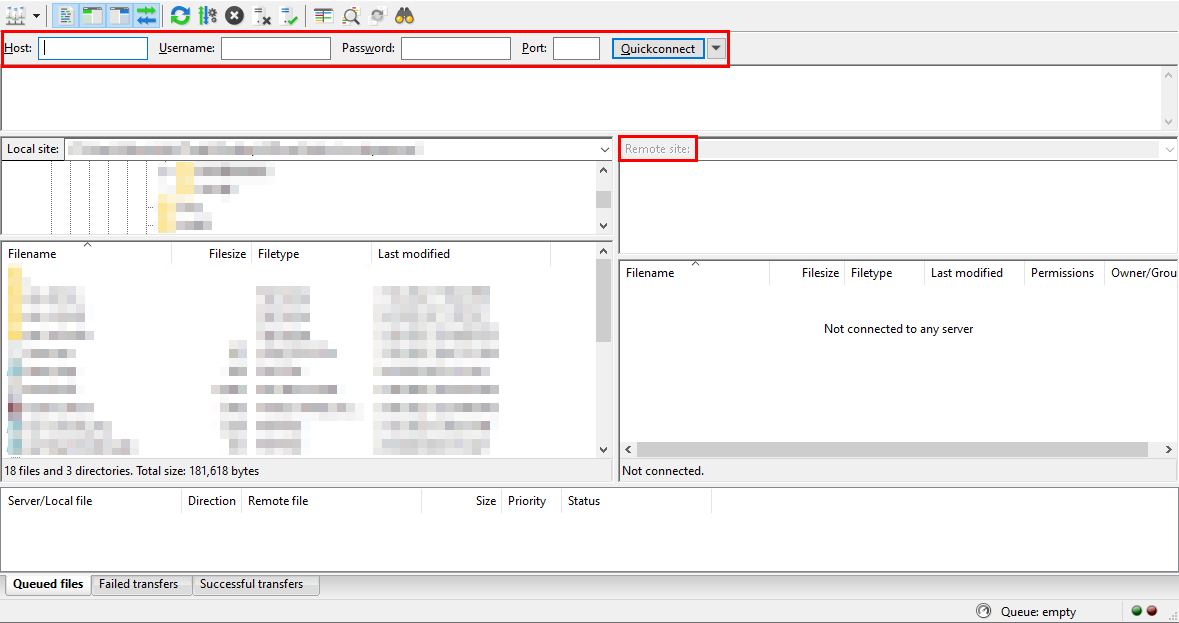
An FTP (File Transfer Protocol) client is a software application that will allow you to transfer files between your local computer and your remote server. It enables you to manage files and directories on your VPS and also upload, download, delete, and organize files on the server using FTP commands or a graphical user interface (GUI) provided by your FTP client of choice. This allows you to easily transfer files to and from your VPS, which is essential for tasks such as website deployment, software updates, or backing up data.
FTP clients often support secure file transfer protocols like FTPS (FTP over SSL/TLS) or SFTP (SSH File Transfer Protocol). These protocols encrypt the data transmitted between the client and the server, providing enhanced security for file transfers. When managing a VPS, using a secure FTP client ensures that your data remains protected during file operations.
Control Panels
A control panel is web hosting management software that provides a graphical user interface (GUI) for managing and controlling various aspects of your VPS. They offer an intuitive and user-friendly way to interact with your VPS and perform administrative tasks without needing extensive technical knowledge or command-line expertise.
Control panels typically offer a wide range of features and functionalities to facilitate VPS management, like server provisioning, user management, file management, software installation and updates, network configuration, backups, and security management.
As previously mentioned, Plesk, cPanel, and Webmin are popular control panel options that you can use.
Web Server Software
Web server software refers to the software programs that handle and respond to HTTP requests from your site or app visitors that are hosted on your VPS. These programs are responsible for delivering web pages and other resources to your visitors over the internet.
Additionally, they often provide various optimization options like caching mechanisms, compression techniques, and load balancing to distribute incoming requests across multiple VPS instances and enhance their performance. They log incoming requests and server activities to help you troubleshoot issues, monitor server performance, and analyze your website’s or app’s traffic patterns.
Monitoring Tools
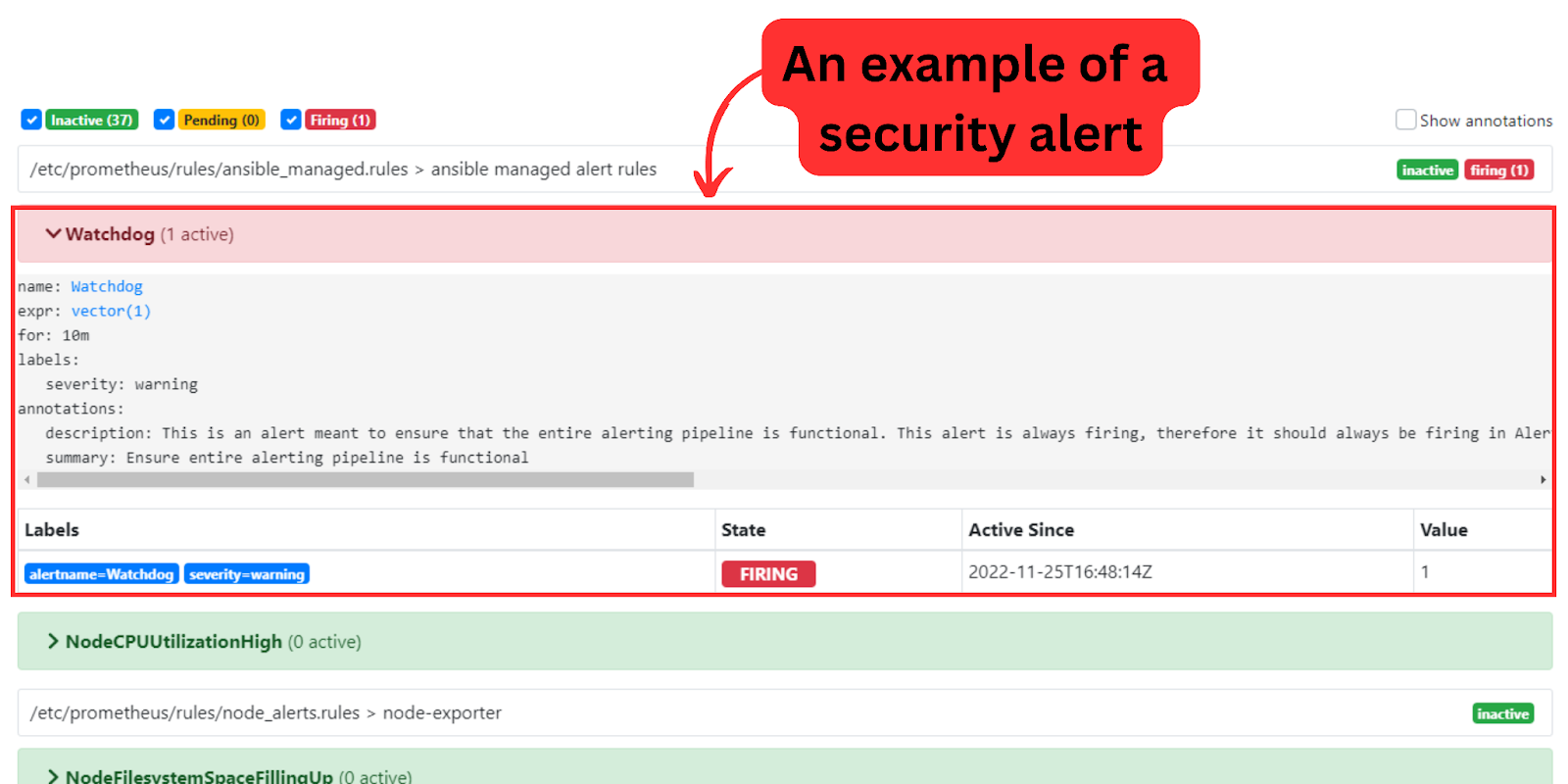
Monitoring tools are software applications or services designed to track and analyze the performance and health of various components within a system or network. They collect data from your servers, applications, databases, network devices, and other infrastructure elements to provide real-time insights into their behavior and identify any potential issues or anomalies.
When issues arise, monitoring tools provide valuable insights into the root cause of the problem. They offer detailed metrics and logs that can be used for troubleshooting and diagnostics, enabling you to identify and resolve issues affecting your VPS quickly.
Database Management Systems (DBMS)
Database Management Systems (DBMS) are software applications that enable the storage, organization, retrieval, and management of data in a structured manner. They provide a systematic approach for creating, updating, and maintaining your databases, allowing you to store, retrieve, and manipulate data efficiently.
DBMSs provide a robust foundation for managing VPS instances by offering efficient data storage, retrieval, resource allocation, user management, configuration management, and reporting capabilities. They enable administrators to effectively manage and monitor virtual servers, ensuring smooth operations and optimal resource utilization.
Firewall Software and Security Enhancements
Firewall software is a crucial component of network security because it acts as a barrier between a trusted internal network and an untrusted external network, such as the Internet. It monitors and controls incoming and outgoing network traffic based on predetermined security rules, preventing unauthorized access, malicious attacks, and data breaches.
Firewall software is the first line of defense as it monitors and filters network traffic. It inspects incoming packets and allows or blocks them based on predefined rules. This helps to protect the VPS from unauthorized access attempts, network-based attacks, and malicious traffic.
Many VPS control panels, such as cPanel, Plesk, or Virtualmin, come with built-in firewall management systems. These systems provide a user-friendly interface to configure firewall rules and manage network security settings.
You can further enhance your VPS security with third-party tools like Fail2ban and ClamAV, which help to provide protection against brute-force attacks where attackers attempt to gain unauthorized access by repeatedly trying different login credentials. They also scan log files for suspicious activity (e.g., multiple failed login attempts), dynamically update firewall rules to block the offending IP addresses, and scan files and emails for known malware, viruses, and other malicious content.
Backup Solutions
Backup solutions refer to the process of creating copies of data or files to protect them from loss or damage. These copies can be stored on separate storage devices or in remote locations, providing an additional layer of security and data recovery options.
Backup solutions also often provide the ability to store multiple versions of backups. This feature allows you to roll back to a specific point in time, undoing any unintended changes or errors. It gives you the flexibility to test new configurations or updates on your VPS and revert to a known stable state if needed.
Some VPS hosting providers offer built-in backup services as part of their hosting packages. These providers typically perform regular backups of VPS data and store them on separate servers or storage devices. However, it’s important to check the frequency, retention period, and restoration process of these backups with the hosting provider.
On the other hand, you can configure automated backup processes to upload your VPS backups securely to the cloud using cloud storage services like Amazon S3, Google Cloud Storage, and Backblaze B2. These services offer high durability, redundancy, and availability of data. Cloud backup services protect against hardware failures and local disasters while providing offsite storage for added data safety.
Remember, the specific tools you’ll need depend on your requirements and the operating system of your VPS. The options that we’ve covered here will serve as a good starting point, but you might not need every tool mentioned. Tailor your toolkit to match your specific needs, maximizing your VPS experience with precision and efficiency.
Top VPS Management Services and Providers
When it comes to the realm of VPS management services and providers, the market has a lot of options that you can pick and choose from. Thus, we have diligently curated this list of the top VPS hosting providers. We’ve accentuated their pivotal features, remarkable benefits, and their pricing options to empower you with the knowledge necessary to make an informed decision.
| Provider | Features | Price* |
|---|---|---|
| Liquid Web | High availability hosting with global data centers. Free migrations for new server orders. 24/7/365 human support. Industry-leading customer loyalty, as demonstrated by its NPS score of 67. |
Starts at $15/month (2 GB RAM, 40 GB SSD storage). Cloud VPS starts at $5/mo (1 GB RAM, 30 GB storage). |
| DigitalOcean | Flexible API. Scalable resources. Easy-to-use control panel. Wide range of pre-built templates and applications. |
Starts at $4/month (512 MB RAM, 10 GB SSD storage). |
| Vultr | Fast and reliable VPS hosting. High-performance SSD storage. 100% Intel CPUs. Scalable resources. |
Starts at $2.50/month (512 MB RAM, 10 GB SSD storage). |
| Linode | Flexible and scalable VPS hosting. Fast SSD storage. 40 Gbps network throughput. Scalable resources. |
Starts at $36/month for a dedicated virtual machine (4 GB RAM, 80 GB memory storage, 2 virtual CPUs). You can use their predictable pricing table to estimate the cost of your usage. |
| Amazon Web Services (AWS) | Flexible and scalable VPS hosting. Wide range of cloud computing services. Scalable resources. Pay-as-you-go pricing. |
Starts at $0.0058/hour (1 GB RAM, 8 GB SSD storage). |
As you can see, Liquid Web stands out as a top choice, offering fast and secure hosting solutions tailored to different customer needs.
Let’s take a closer look at each of these providers:
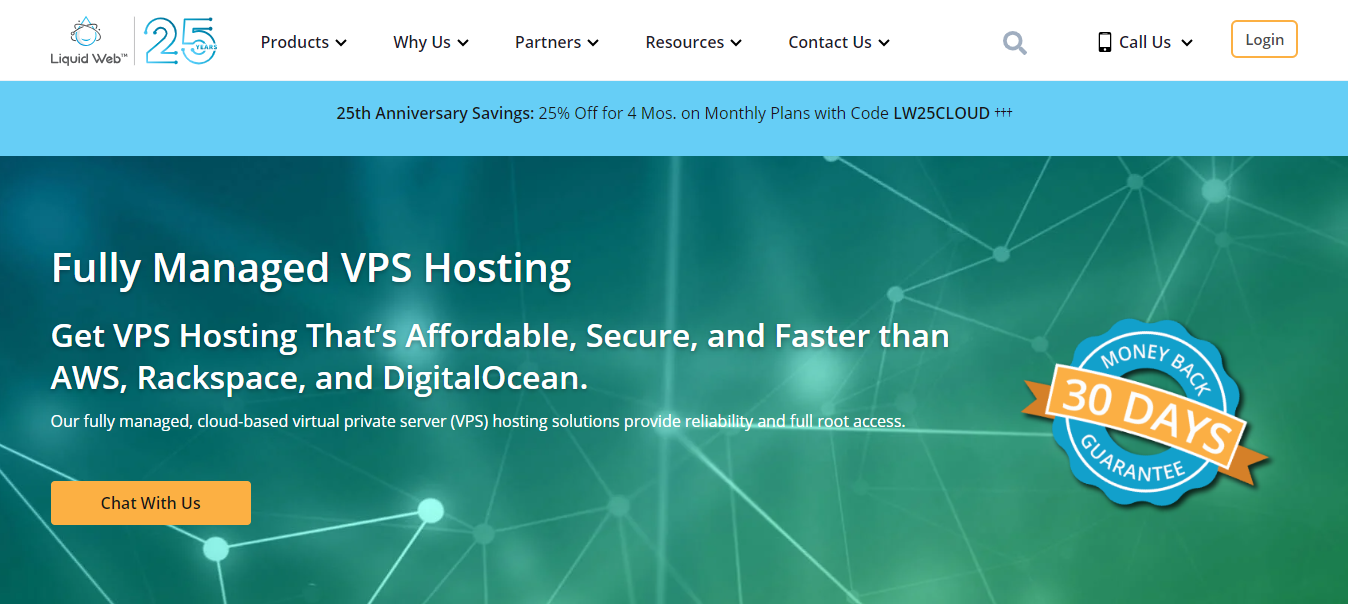
Liquid Web is a top choice for VPS management, providing fast and secure hosting solutions tailored to different needs. With high availability hosting and global data centers, Liquid Web ensures reliable performance. They also offer compliant solutions for healthcare providers and financial institutions, making them suitable for businesses with specific regulatory requirements.
Liquid Web’s managed VPS not only provides peace of mind but also offers a robust combination of additional benefits, including:
- Quick resizing for changes in traffic flow.
- Only pay for what you use.
- Host unlimited sites (based on the resources available).
- Cost-effective hosting solution.
- Contract-free hosting.
- Multiple OS choices available.
- Daily backups (via your Manage Interface).
- SSH and full root access.
- Highly stable and secure.
Liquid Web also includes its own control panel, InterWorx, to assist you in managing your virtual private server along with cPanel and Plesk. These offerings are fully managed by Liquid Web’s support team. Other management panels like DirectAdmin, Webmin, and CentOS Web Panels are not supported, but users may install and use them on almost all servers.
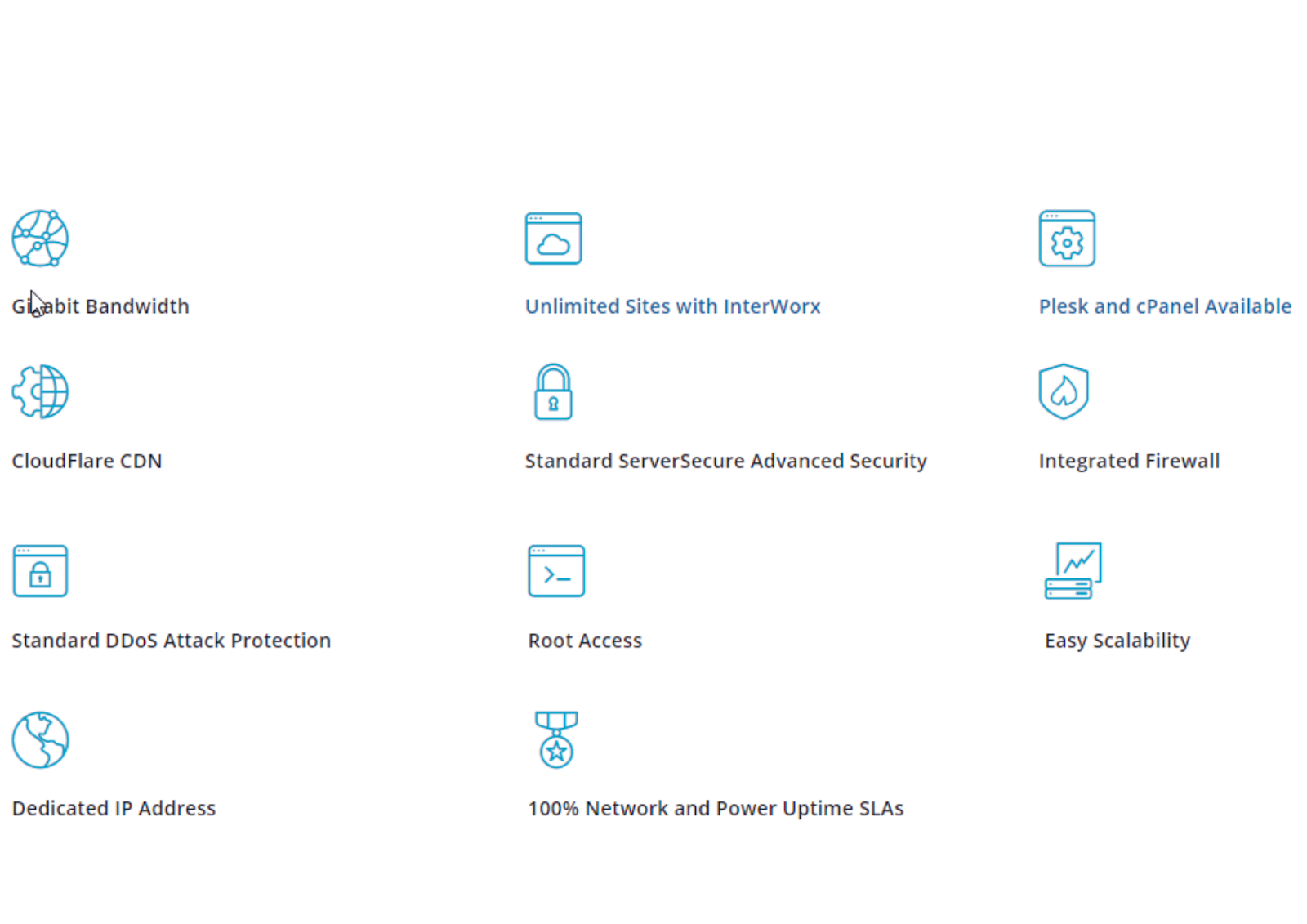
Furthermore, Liquid Web has 24/7/365 human support and free migrations for new server orders, earning it amazing user reviews.

DigitalOcean
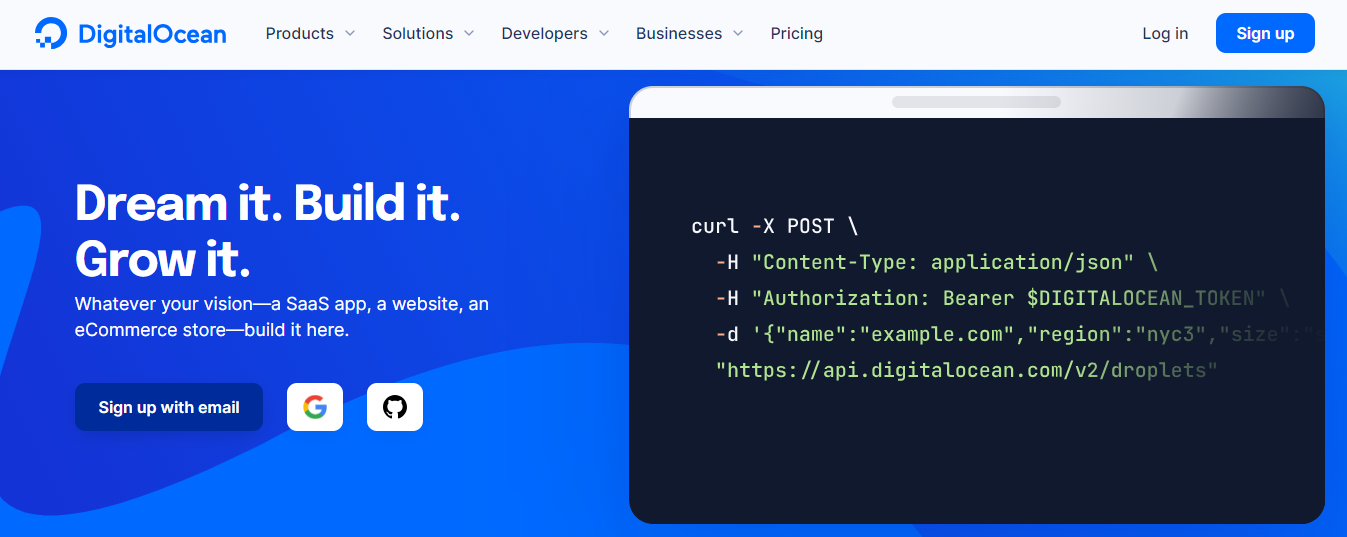
DigitalOcean is a popular VPS provider known for its cloud-based hosting solutions. Their easy-to-use control panel, flexible API, and vast collection of pre-built templates and applications make it convenient for users to deploy and manage their VPS instances. Additionally, they offer flexibility and efficiency at an affordable starting price of $4 per month.
Unfortunately, DigitalOcean offers a more limited range of services compared to larger providers like Liquid Web and AWS. It has a smaller ecosystem, potentially requiring more manual configuration and setup due to the limited availability of integrations and third-party tools. The scope and availability of their customer support may also be more limited. That said, DigitalOcean can still be a suitable choice for you if you’re an individual developer, small business, or startup, depending on your specific needs.
Vultr
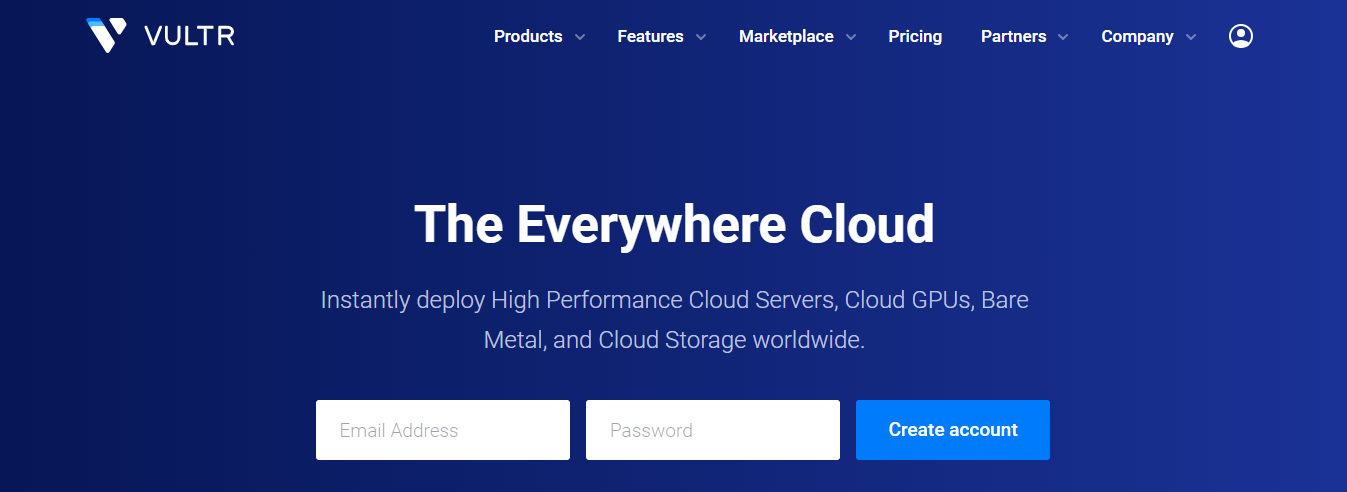
Vultr offers fast and reliable VPS hosting services with high-performance SSD storage, 100% Intel CPUs, and global data center locations, Vultr ensures optimal performance and availability. Their VPS plans can be customized to suit specific user requirements, and they offer competitive pricing starting at just $2.50 per month.
Some drawbacks to consider are limited customer support (primarily through ticketing and forums), no phone support, a complex setup process if you’re a beginner, and a more limited global footprint compared to other providers on this list.
Linode
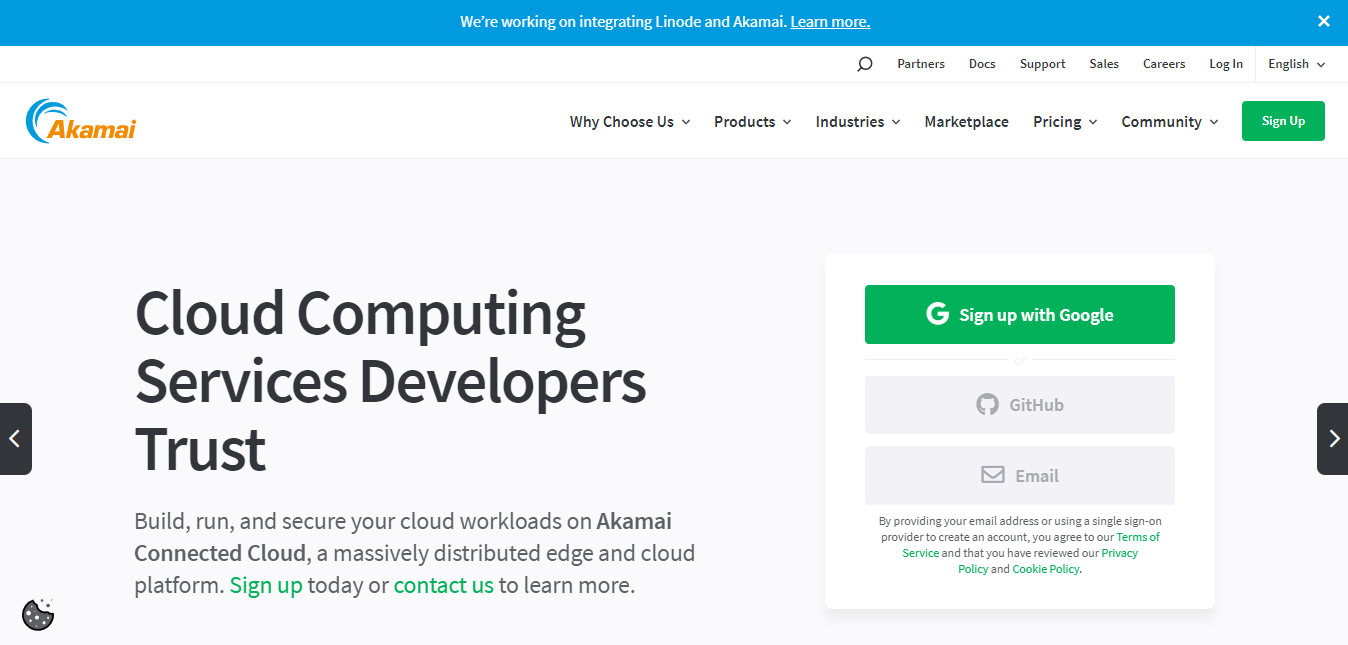
Linode is a popular cloud hosting provider that specializes in providing scalable and reliable virtual servers. With Linode, you can deploy and manage Linux-based virtual machines (known as Linodes) in their data centers around the world. They offer a variety of plans with different specifications, including CPU, RAM, storage, and bandwidth options, allowing you to choose a configuration that best suits your needs.
Additionally, Linode provides a user-friendly control panel and offers features such as automated backups, load balancing, and advanced networking options for your VPS.
However, Linode’s VPS hosting has a few drawbacks to consider. They primarily focus on Linux-based hosting, so it may not be suitable if you specifically require Windows support. Moreover, their hosting environment is self-managed, meaning you’ll be responsible for setup and maintenance yourself, which can be challenging if you lack the technical expertise or prefer a fully managed solution. Lastly, they are primarily geared toward developers and businesses with larger-scale projects or higher resource requirements. Therefore, if you are going to host very small-scale projects, Linode may not be the most cost-effective option for you because it’ll lead to overpaying for resources and features that are not necessary for your project’s requirements.
Amazon Web Services (AWS)

For those seeking a comprehensive cloud computing solution, Amazon Web Services (AWS) offers flexible and scalable VPS hosting alongside a wide range of other cloud services. With customizable plans and pay-as-you-go pricing, AWS caters to varying workload demands. Their pricing starts as low as $0.0058 per hour, making it an attractive option for businesses of all sizes.
However, AWS web services can be complex and require technical expertise. Their costs can escalate if you don’t closely monitor your usage. Another drawback is that building your infrastructure on AWS may create vendor lock-in, which will make it difficult for you to switch providers if you want to.
These providers offer a range of VPS management services with diverse features and pricing options, allowing you to choose the one that best suits your specific requirements.
Optimizing Your VPS for Better Security and Performance
To enhance the security and performance of your VPS, it’s crucial to take steps to effectively protect your data and optimize resource usage. Let’s take a look at some key security practices and performance improvement tips that will help you maximize the potential of your VPS.
Implementing Essential Security Measures
Not only will implementing the following vital security measures protect your data but also they’ll prevent unauthorized access, minimize potential vulnerabilities, and shield your virtual environment from cyber threats.
- Regularly update server software and applications – Keep your operating system, web server software, and any third-party applications (like PHP or MySQL) up to date. By doing so, you can patch vulnerabilities, address bugs, and take advantage of performance enhancements.
- Configure firewalls –Configure firewalls on your server to block unauthorized access and malicious traffic. This will add an extra layer of protection to your server.
- Implement SSL certificates – Encrypt the data transmitted between your server and users by installing SSL certificates. This will ensure secure communication and prevent data interception.
- Enforce strong password policies – Require strong passwords and limit user access to sensitive areas of the server. This will minimize the risk of unauthorized access to your server.
- Use intrusion detection and prevention systems (IDPS) – Employ tools such as Snort or Suricata to monitor and protect your VPS. These tools can help identify and prevent potential security breaches.
Performance Optimization Tips
To enhance the performance of your VPS, focus on resource optimization and configuration adjustments by doing the following:
- Monitor resource usage – Regularly monitor the CPU, RAM, and storage usage of your server using tools like top, Htop, or SAR. This will allow you to identify any performance issues and adjust resource allocations accordingly.
- Implement caching mechanisms – Improve server response times and reduce the server load by implementing caching mechanisms. Tools like Varnish, Memcached, or Redis can be used to cache frequently accessed data and files.
- Configure web server settings – Optimize the settings of your web server to enhance performance. For example, enable Gzip compression to reduce file sizes, and set appropriate keep-alive timeouts to reduce connection overhead.
- Optimize database queries and indexing – Analyze the performance of your database using tools like MySQLTuner or pt-query-digest. Also, identify and optimize slow queries and ensure that proper indexing is in place. This will help minimize bottlenecks and reduce latency.
- Keep server software up-to-date – Regularly update your server software to take advantage of the latest performance improvements and security patches. This will ensure that your server operates optimally and stays protected against vulnerabilities.
Implement the above server-level optimizations and application-specific improvements to ensure that your VPS operates at its full potential, delivering a fast and responsive experience to your website or app users. Additionally, remember to regularly monitor your VPS, update software, and fine-tune your configurations to keep up with your evolving needs and to create and maintain a reliable and secure environment for your online business.
Learning VPS Management: Tutorials, Courses, and Guides
A variety of resources are available to help you learn and master VPS management while catering to different learning styles and preferences. The following resources can help you understand various VPS management fundamentals, tasks, and techniques:
- Video tutorials and webinars – Visual demonstrations of VPS management tasks and techniques can be found in video tutorials and webinars on platforms like YouTube, Udemy, or Coursera.
- Case studies and success stories – Real-world examples of effective VPS management strategies and techniques can be found in case studies and success stories published by hosting providers, technology companies, or industry publications.
Liquid Web provides a wealth of educational resources, including tutorials, webinars, and blog posts, to help users learn and master VPS management. By exploring these resources and engaging with various learning materials, you can develop the skills and knowledge needed to effectively manage your VPS and ensure optimal performance, security, and reliability for your project.
Start Managing Your VPS With Confidence Today
Now that we’ve covered the essential aspects of VPS management and provided you with valuable insights and resources to help you confidently manage your virtual server, you have all the tools at your disposal to handle your VPS effectively and with confidence. As you get started, remember to:
- Start with a solid understanding of VPS management basics, including server monitoring, maintenance, backups, and security.
- Continuously learn and stay updated with industry trends and best practices to ensure optimal VPS management.
- Choose a reliable VPS hosting provider, such as Liquid Web, that offers a range of features, resources, and support services to help you confidently manage your VPS.
Liquid Web’s VPS hosting solutions, combined with their wealth of resources, features, and support services, make it an ideal choice for you if you’re looking to confidently manage your own VPS and achieve optimal performance, security, and uptime.
Get started with Liquid Web’s VPS hosting and follow the tips and best practices shared in this guide to embark on your VPS management journey with confidence, ensuring a reliable, secure, and high-performing environment for your online business or project.
